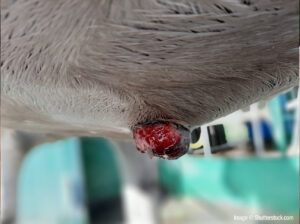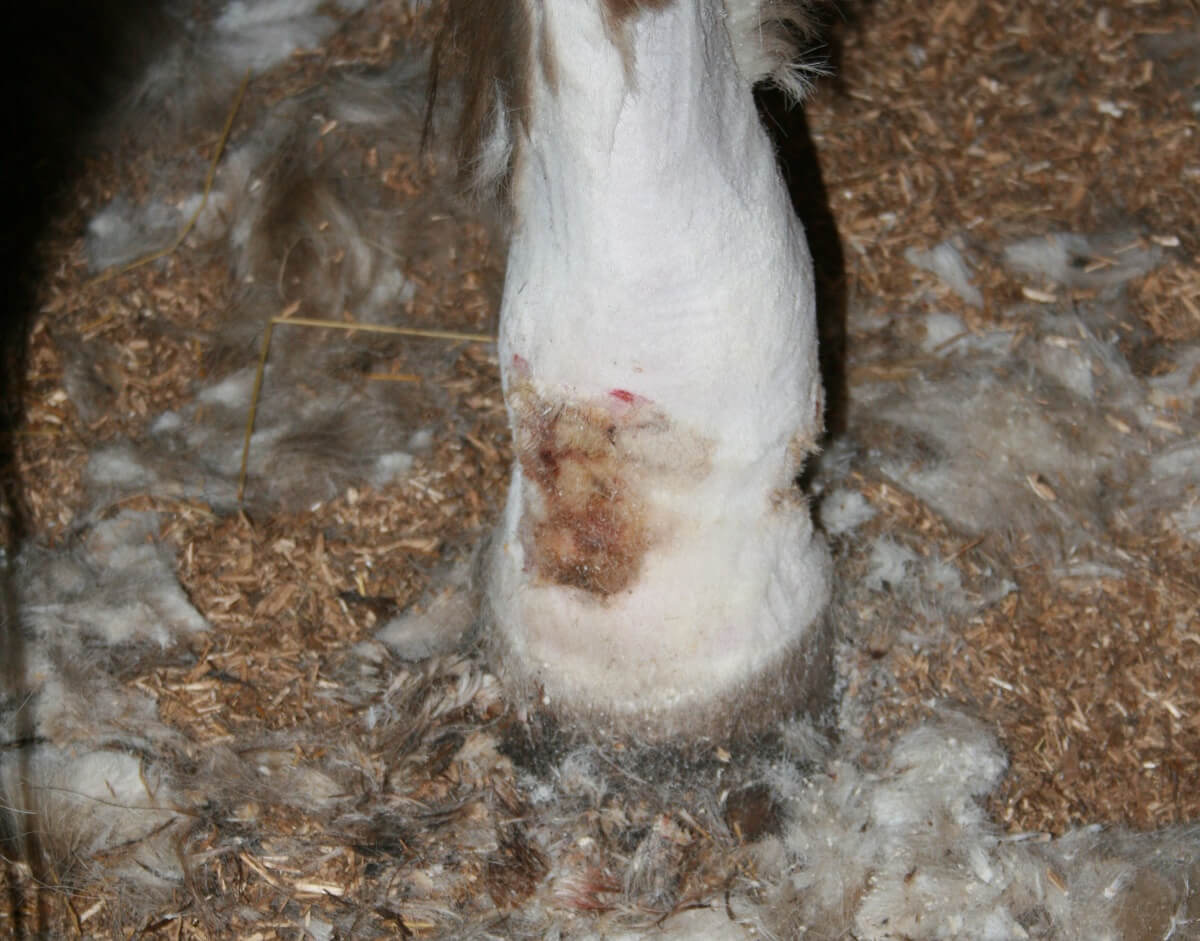Skin disease is surprisingly common in the horse and it can present in a variety of ways.
Many diseases are pruritic or itchy, others will be associated with scale and pus, some are restricted to particular areas such as the legs and others may be associated with nodules of various sizes. Sometimes the type of lesion such as patches of hairlessness or obvious areas of rubbing will give a clue as to the underlying cause. However, often horses have rubbed themselves and damaged the skin so badly that the original lesions are no longer apparent, in addition horse owners often have applied various ointment, creams, sprays or shampoos which will alter the skin before the vet is actually called to examine the horse. For those cases which do not have an obvious underlying cause, further diagnostic tests can prove extremely useful so that treatment can be targeted directly at the cause.
Skin brushings, scrapings or even sellotape strip samples can be extremely useful to look for parasites such as lice and mites. Impression smears of scabs can be very useful for identifying fungal or bacterial infections.
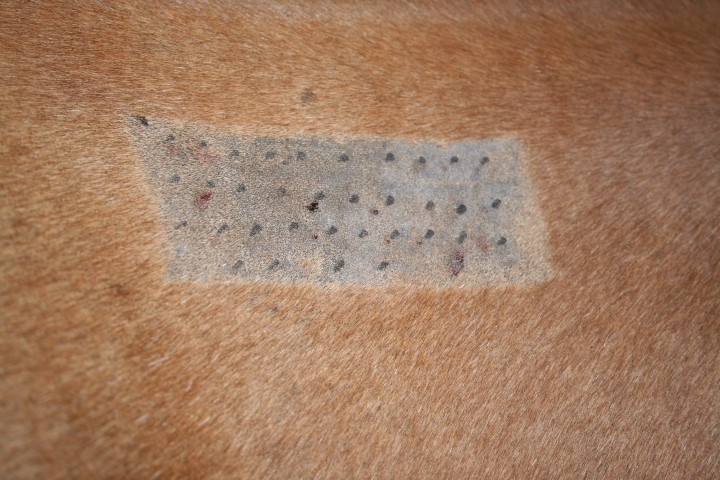
Intra-dermal skin (allergy) testing.
Treatments targeted at our diagnosed conditions may involve shampoos or other types of washes, creams, anti-inflammatory drugs and antibiotics. For allergies we may consider avoidance of the cause or even desensitisation using a vaccine. We have successfully desensitised horses with respiratory and skin allergies, as well as the odd head shaker.
Common Skin Conditions in the Horse
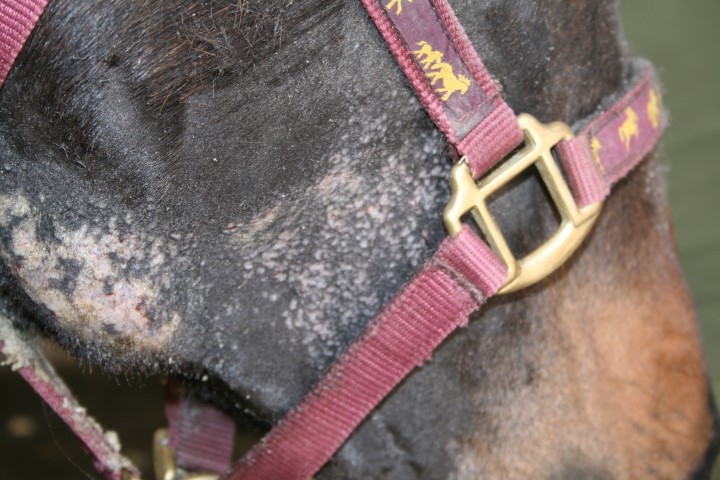
If simple treatment doesn’t cure the problem, getting the correct diagnosis is key to managing and curing the skin condition. Please ask one of our vets for advice tailored to your horse on (01728) 685 123.
Lice
Lice can often been seen as ‘moving dust’ with the naked eye. Depending on the type of lice, the parasites will either suck the horse’s blood or feed off dead skin cells.
The lice lay eggs called nits in the horse’s hair coat and mane. These nits will hatch into nymphs which mature into egg-laying adults. Both nymphs and adults cause the itching associated with lice.
Chorioptic mange (mites)
Horses can be seen shaking, scratching, rubbing, stamping and biting the affected areas regularly. The legs are mostly affected, with itchy heels and foot stamping.
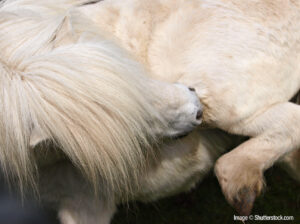
Sweet Itch
Sweet itch is the most common summer allergy seen in horses in the UK. Please see our client information sheet on sweet itch for further information.
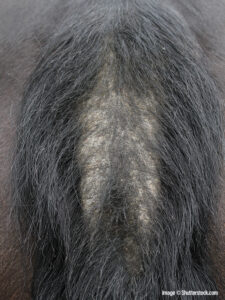
Mane and tail are classic sites for self trauma with allergic sweet itch.
Urticaria
An allergic reaction which can potentially be caused by a number of different allergens (often ingested) causing soft wheals to appear.
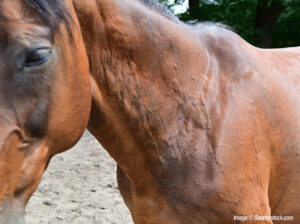
Horse with soft lumps (wheals).
Sarcoids
The many guises of the sarcoid: flat or nodular, near eyes, sheath or between legs. Please see our information sheet on sarcoids for more details.
